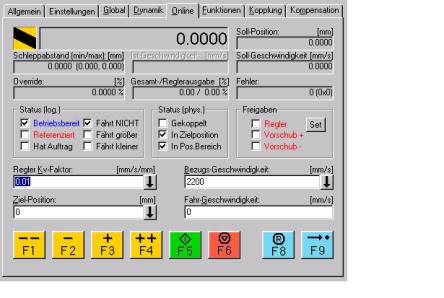Overview
The PLC and the NC communicate in two ways:
- Cyclical interface from the PLC to NC (enables, overrides etc.) NC to the PLC (actual values, statuses etc.): Exchange of the necessary information in each PLC cycle by way of the cyclical process image.
- Function blocks Function blocks (referred to below as NC-FBs) in the sense of IEC1131 are provided, each of which contains several related functions. The NC-FBs are implemented as firmware blocks. In other words, they are part of the controller software, and their behavior has a fixed definition. The blocks have inputs and outputs whose data types are all elementary IEC1131 data types (i.e., no derived types).
The NC-FBs are utilized through the formation of instances:
The PLC programmer creates a variable (an instance) of the desired block whenever required and can then supply parameters to it when it is called.
Communication is provided between the PLC and NC axes, and between the PLC and the controller channels. In both cases there is a direct exchange of data on the level of the process images. This data must always be available. Functions are called by associated blocks which implement data exchange through ADS services.
All the available PLC languages can be used to access these blocks.
The NC architecture of the equipment is represented in the System Manager: entries are made for the NC channels and axes, and, optionally, other special groups (interpolation). These elements must then be parameterized. This makes it possible to add to the tree in order to insert a new NC axis or a new NC channel into an existing configuration (the NC is freely scalable NC). It is possible to drive all the existing axes individually, or to place them into groups of two or three to permit interpolating processes. It is also, for example, possible to couple individual axes as slaves to any other axis (the master).
The maximum number of NC elements (axes, groups or channels) that one computer can support depends on the available computing power. The structure of the software limits the number of axes to a maximum of 255.
Axes are commissioned with the aid of the appropriate dialogues in the NC configuration area of the System Managers.
Example

You will find further information either in the documentation or in the System Manager's online help.
Library functions and function blocks
The PLC library collects useful functions and function blocks for programming axis controllers. A library contains blocks that can be used universally. Blocks for special NC functions are found in additional specialized libraries.